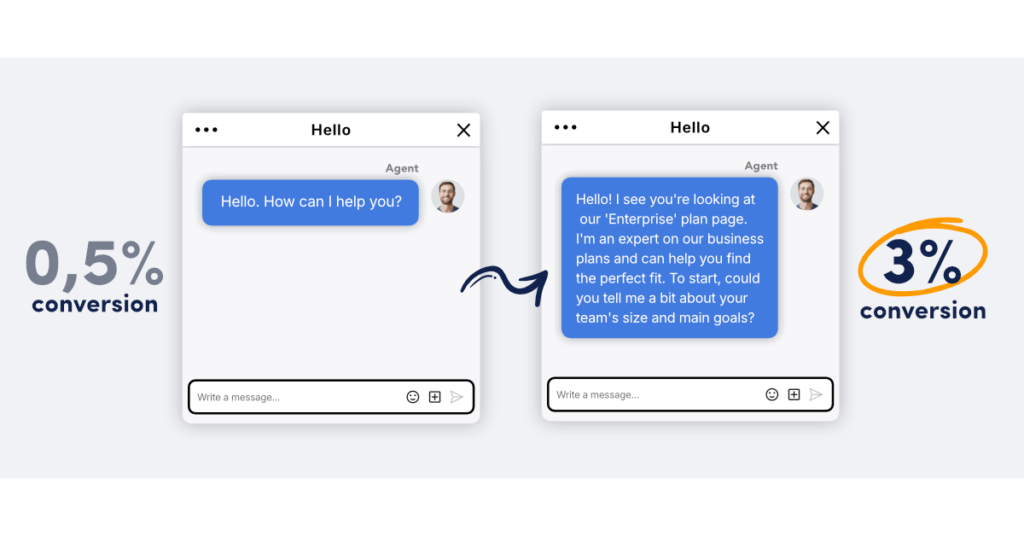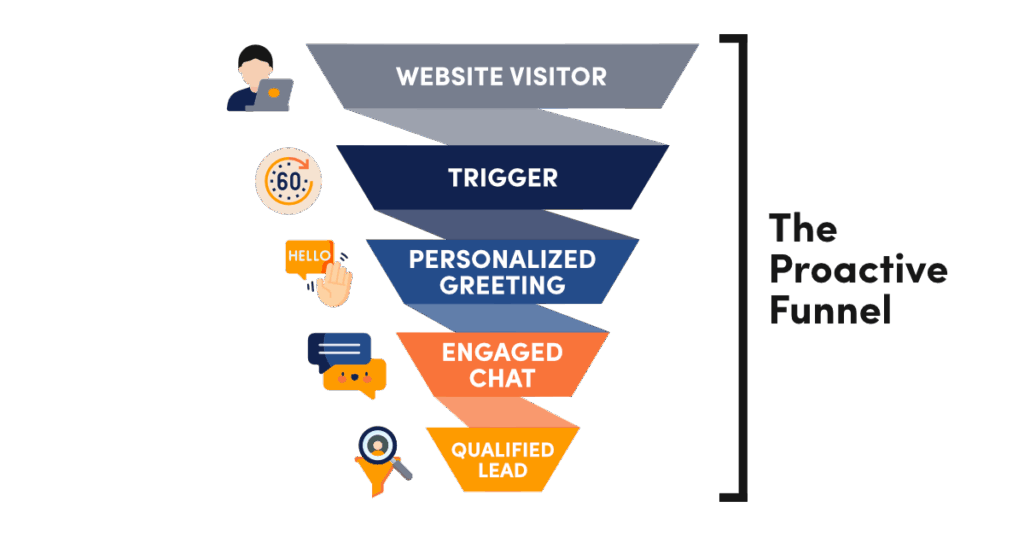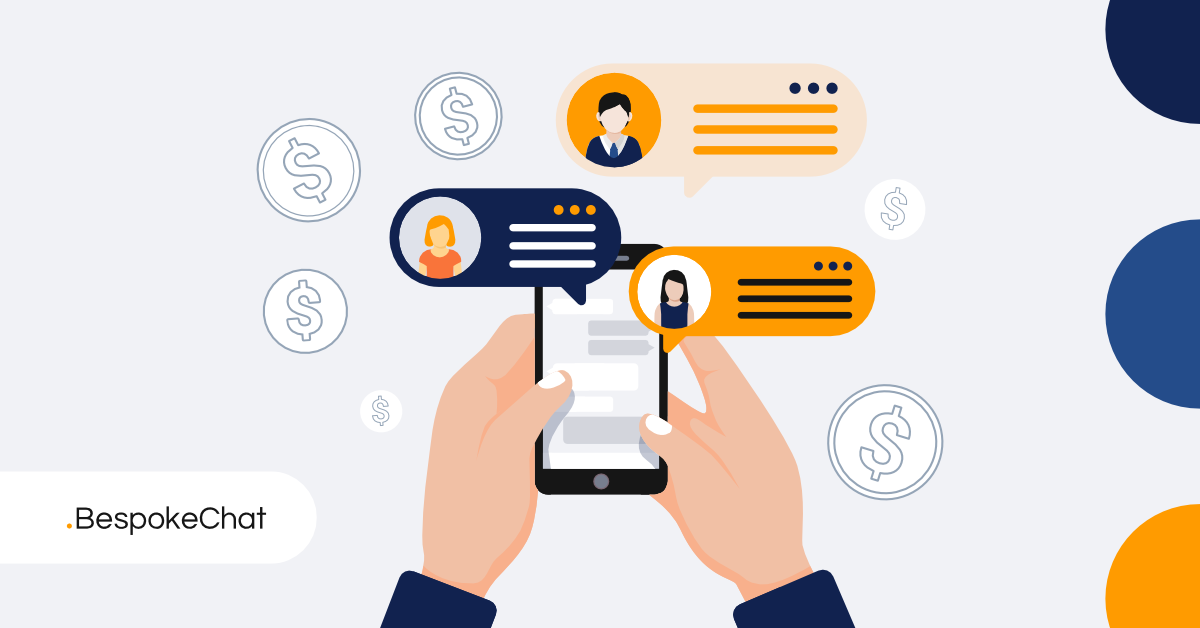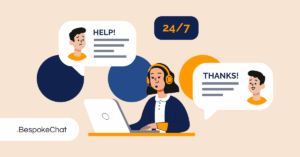Imagine your best salesperson standing silently in the corner of your showroom, waiting for customers to approach them first. It’s unthinkable, right? A great salesperson engages, asks questions, and starts conversations. Yet, many businesses let their chat widget sit passively on their website, doing exactly that-waiting. If you want to transform your chat into a sales engine, you can’t afford to be passive. It’s time to stop waiting for conversations to happen and start making them happen.
In the first two parts of our series, we established chat as a primary sales channel and stressed the importance of being available when your customers are online. Now, let’s get to the heart of a proactive strategy: actively generating more conversations. Why? Because every chat is a potential sale, a learning opportunity, and a chance to build a relationship. Simply being available isn’t enough; you need to invite people to the conversation.
Don't Wait... Initiate!
A passive chat widget is like a door that’s unlocked but closed. A potential customer has to know it’s there, decide to use it, and make the first move. A proactive chat invitation, on the other hand, is like a friendly host opening that door and welcoming them in. The difference in engagement is staggering. Companies that switch from a passive to a proactive chat strategy often see a dramatic increase in the number of conversations-some even report an increase of up to 80%.
This isn’t about annoying your visitors with constant pop-ups. It’s about using intelligence and context to offer help at the precise moment it’s most needed and most likely to be welcomed. By initiating the conversation, you take control of the customer journey, guiding them away from potential friction points and closer to a purchasing decision. You’re not just a service; you’re a guide.
The Art of the Proactive Invitation
A successful proactive chat is all about context. A generic “How can I help you?” message that pops up the second someone lands on your site is easily ignored. A targeted, relevant invitation, however, feels like genuine, personalized service.
Let’s look at how this works in practice.

Example 1: The Specific Product Page
- Context: A customer is Browse your page for the “Model Z” SUV and has been there for over 45 seconds. They are clearly showing interest.
- Proactive Greeting: A chat window appears with a picture of a friendly agent and the message: “Hi! I see you’re looking at our popular Model Z SUV. We have a special financing offer on it this month. Would you like me to send you the details?”
- Customer’s Reaction: This isn’t an interruption; it’s a relevant piece of information that adds value to their research. They are far more likely to engage.
Chat agent 10:55 PM
Customer 10:57 PM
Chat agent 10:58 PM
Example 2: The High-Intent Pricing Page
- Context: A visitor has been on your pricing page for over a minute, likely comparing plans and features. This is a critical decision point.
- Proactive Greeting: “Hi there! Choosing the right plan can be tricky. Do you have any questions about the features or which option would be best for your needs? I’m here to help.”
- Customer’s Reaction: The customer might be feeling slightly overwhelmed. This offer of help is perfectly timed to alleviate their uncertainty.
Chat agent 10:07 AM
Customer 10:12 AM
Chat agent 10:15 PM
In both cases, the invitation was timely, contextual, and helpful. It transformed a silent browser into an engaged lead.
Your Proactive Toolkit in LiveChat
LiveChat is built for proactive engagement. Here are the key features you need to master:
- Greetings: This is your primary tool for initiating chats. Don’t just turn them on; create a strategy. Set up multiple, targeted greetings based on specific conditions. You can trigger a greeting based on:
- Current page URL: Create custom messages for your most important pages (homepage, pricing, specific product categories).
- Time on page/site: Engage a visitor who is dwelling on a page, indicating interest or confusion.
- Visited pages: Target a visitor who has viewed several related items, like multiple car models. For a deep dive into setting these up, visit the LiveChat Help Center page on Greetings.
2. Eye-catchers: Before a greeting even appears, an eye-catcher can draw a visitor’s attention to the chat window. This is a small, visually appealing image that sits on top of the minimized chat widget. You can upload a custom image-perhaps a picture of your team or a graphic with a call to action like “Questions? Chat now!”-to make the chat feature more prominent and inviting. Learn more here: Eye-catchers.

Once you start generating more chats, you need to ensure your team handles them effectively and consistently. Super Trainer automations can help you systematize your proactive sales process.
You can configure Super Trainer automations to work in tandem with your greetings strategy. For example, when a chat is initiated on the pricing page, you can automatically assign a “Pricing Page Checklist” to the agent. This checklist could include:
- Ask about the customer’s business size.
- Explain the key difference between the Pro and Enterprise plans.
- Offer to schedule a personalized demo.
You can also set up automated tasks and reminders. For instance, if a customer’s initial message contains the word “discount” or “offer,” Super Trainer automations can automatically add a tag to the chat and prompt the agent: “Reminder: Explain the value of the annual plan discount.” This ensures that every agent follows your best practices on every single chat, turning those proactively generated conversations into measurable revenue.
Stop waiting for customers to come to you. Reach out, engage them with relevant offers, and guide them toward a solution. The more conversations you start, the more sales you’ll close.




